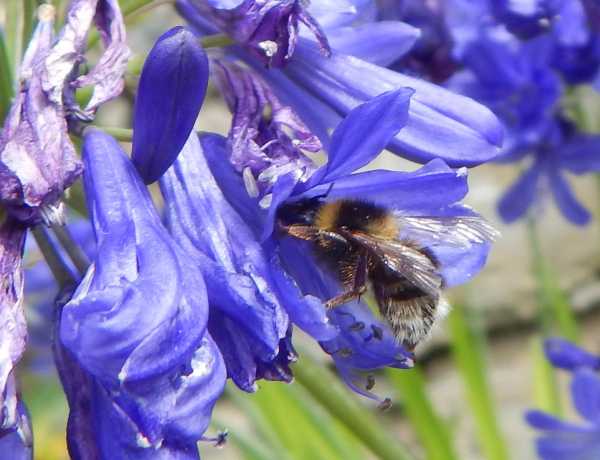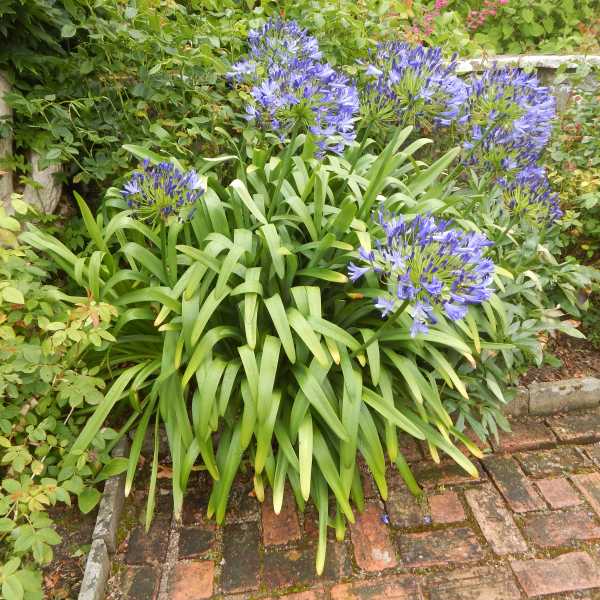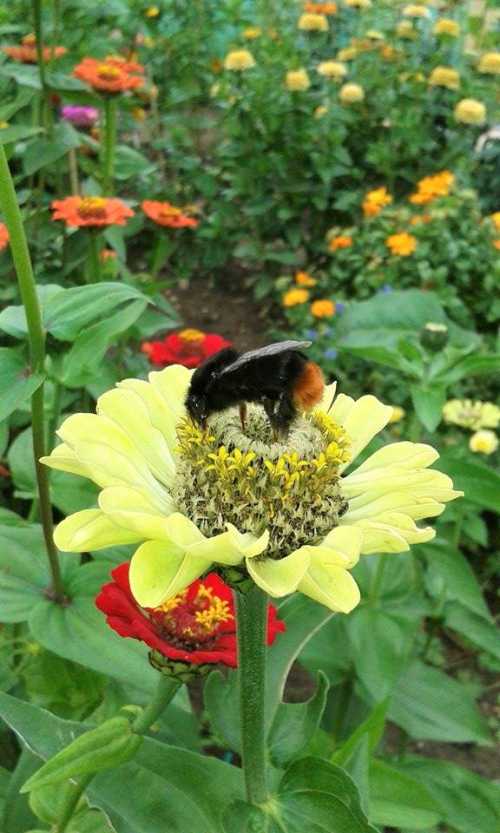Do Bees Like Agapanthus?
Yes, bees do like Agapanthus, so if you have a sunny border and you're wanting to select plants that feed bees, carefully selected Agapanthus may be a good choice for your garden!
Planting Agapanthus For Bees

Agapanthus originates in South Africa, and is also known as 'African Lily'. Agapanthus have tall stems, and have a lovely clump of foliage at the base of the stem.
Agapanthus are available in shades of blue and in white, and depending on which Agapanthus you select, they may grow anywhere from small 20-60cm (8in-2ft) to 1.5 m (5ft) in height.


Although most of these photographs are of bumble bee visits to Agapanthus, I have fond memories of watching a honey bee foraging on a Agapanthus flowers in a vase during a summer holiday in Italy.
Even when cut, apparently the bees found the flowers worthy of a visit.
I prefer to see Agapanthus in a flower border that is buzzing and humming with the sound of busy insects, especially bees, and I love watching bees reach deep into the tubular flowers to get to the nectar.


Which Agapanthus For Bees?
Agapanthus can be deciduous perennials, or evergreen, but interestingly the evergreens tend to be less hardy.

I recommend selecting hardier types, since those Agapanthus which are not fully hardy may need protection during the cold winter months.
Less hardy types are probably best grown in pots and taken into the conservatory or greenhouse as winter approaches.
This of course means manoeuvring heavy pots around the garden.
Unless you specifically want Agapanthus as a pot plant, you may find it more convenient to select plants that can be grown and left in the flower border all year.

Suggested Agapanthus plants to attract bees:
Blue Agapanthus:
Agapanthus 'Royal Blue'
Agapanthus 'Sky'
Agapanthus 'Isis'
Agapanthus coddii
Agapanthus 'Buckingham Palace'
Agapanthus with deep indigo-blue flowers:
Agapanthus 'Indigo Dreams'
White Agapanthus:
Agapanthus 'Wendy'
Agapanthus 'Ardernei Hybrid'
Other suitable Agapanthus are sure to be available!

Planting and growing Agapanthus
Purchase plants in spring to add to your border. If keeping in a pot, ensure they don't dry out.
African Lily is best gown in full sun. Ensure the soil can retain moisture but is well-drained.
Seed heads are quite attractive!
Propagate by by dividing up clumps between spring and early summer, or alternatively in early autumn after plants have finished flowering.
If you have spare plants, remember to offer them to your friends or a local community project!


